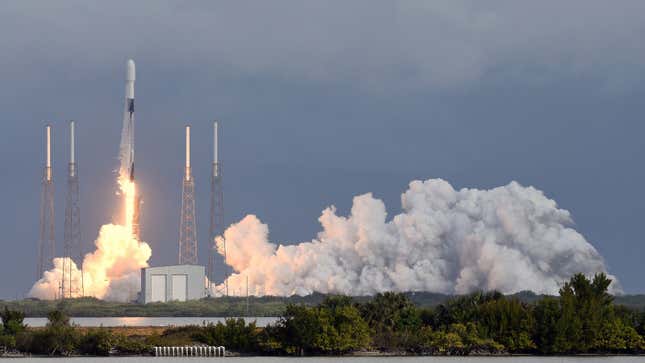In This Story
Enjoyable reality, there are now extra Starlink satellites in area than there are Tesla Supercharger stations within the U.S., with the internet-enabled satellites outnumbering charging stations at a price of round three to at least one. Now, the 6,350 satellites are starting to bother the world’s astronomers, who report that the additional area junk is getting in the best way of some fairly necessary science.
The primary 60 Starlink satellites have been launched in Might 2019 and as of August 2024, that quantity has swollen to effectively over 6,000 satellites in orbit above earth. Now, Starlink has plans to broaden its fleet to greater than 12,000 orbiting satellites, which is proving to be troubling for astrophysicists all over the world, reviews the BBC.
The massive variety of Starlink satellites in orbit is obstructing our view of the cosmos and the radiation emitted by the crafts is interfering with all types of delicate devices right here on Earth. Because the BBC explains:
Radio waves from Elon Musk’s rising community of satellites are blocking scientists’ potential to see into the universe, in line with researchers within the Netherlands.
The brand new era of Starlink satellites, which offer quick web all over the world, are interfering extra with radio telescopes than earlier variations, they are saying.
The hundreds of orbiting satellites are “blinding” radio telescopes and could also be hindering astronomical analysis, in line with Netherlands Institute for Radio Astronomy (ASTRON).
The interference that the satellites are inflicting is a headache for researchers, who say that they see “much less and fewer of the sky” because the Starlink fleet expands, reviews Futurism. Consequently, analysis into galaxies, stars and exoplanets that lie “hundreds of thousands and hundreds of thousands of sunshine years away” is beneath menace.

As a result of the interstellar objects that these researchers are finding out are so rattling far-off, the indicators noticed on Earth can simply be overshadowed by the sunshine and different radiation emitted by Starlink satellites. As Futurism provides:
“In comparison with the faintest astrophysical sources that we observe with LOFAR, [electromagnetic radiation] from Starlink satellites is 10 million instances brighter,” Bassa defined. “This distinction is much like the faintest stars seen to the bare eye and the brightness of the total moon.”
Although astronomers spoke with SpaceX about such considerations years previous to the launch of the second era of satellites, which have been debuting in orbit since early 2023, it appears fairly clear the Musk-owned firm didn’t heed the warning.
“Since SpaceX is launching about 40 second-generation Starlink satellites each week,” Bassa continued, “this downside is changing into more and more worse.”
With the variety of satellites orbiting above Earth projected to surpass 100,000 by 2030, our potential to delve into the deepest depths of our universe might take an enormous hit. On high of that, there’s the added threat of getting all that stuff floating about above the planet, with considerations over the quantity of area junk rising after orbital trash began falling from the sky.


